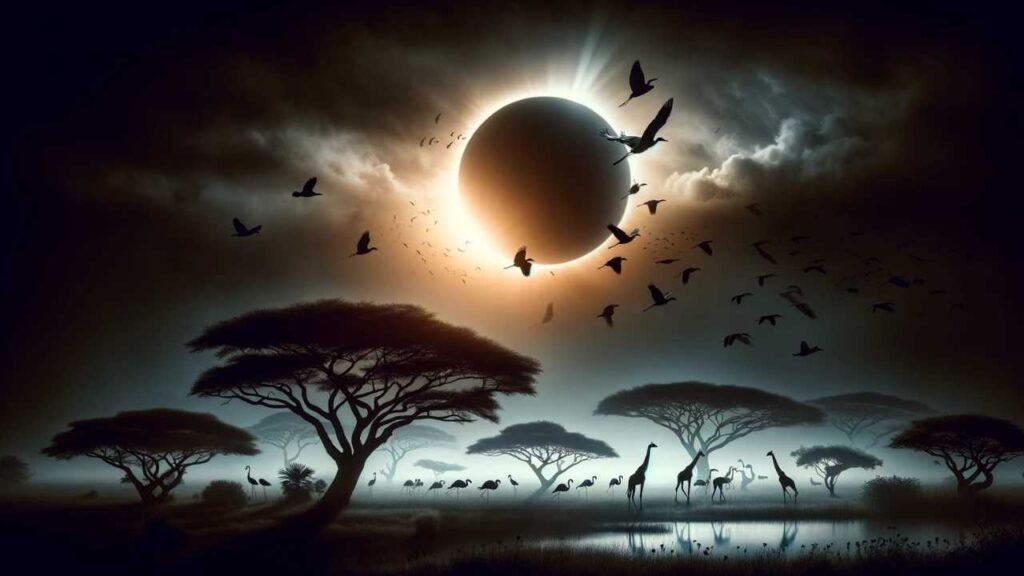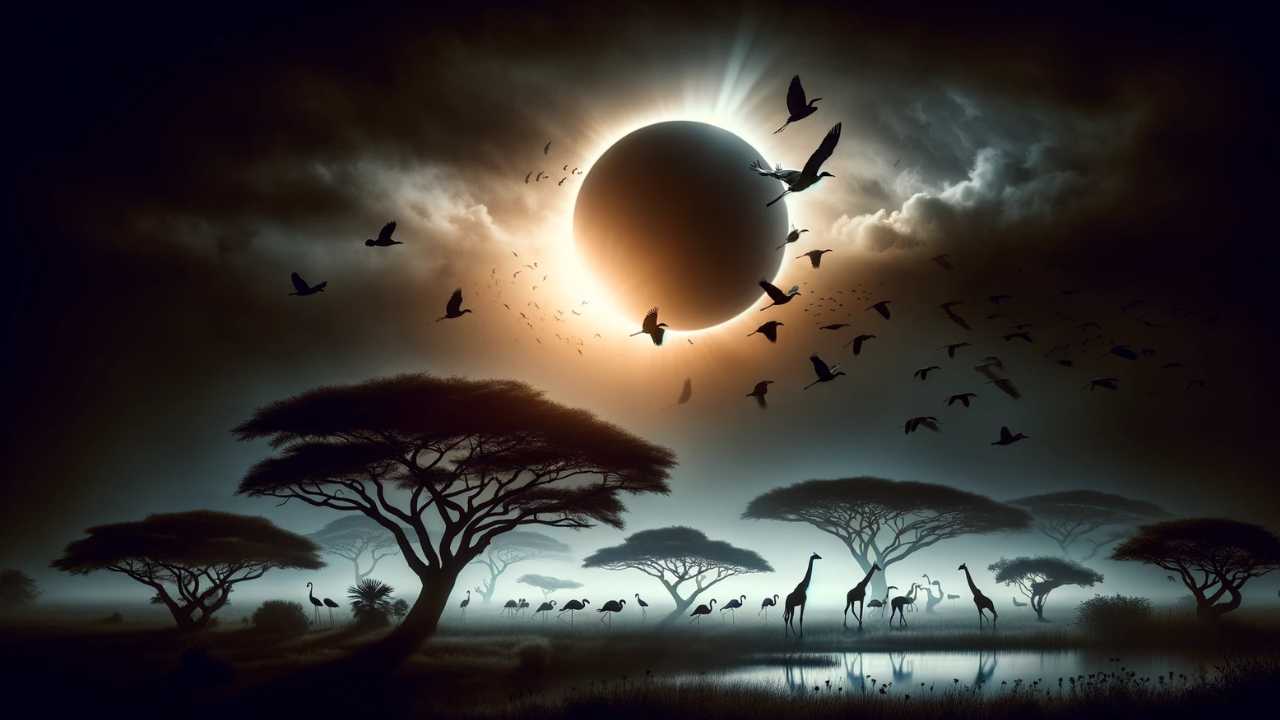Total Solar Eclipse, Animal Behavior, Eclipse Observations, Citizen Science, Zoological Studies, Eclipse 2024, Wildlife Research, Nature Phenomenon
Explore the fascinating impact of the total solar eclipse on animal behavior across the United States. From the mysterious silence of birds to the unexpected activities of zoo animals, this article delves into scientific studies and observations that shed light on how wildlife responds to the celestial spectacle. Join us as we prepare for the 2024 eclipse, with insights from experts and a call to citizen scientists to contribute to this awe-inspiring research.

A Phenomenon Beyond Darkness
Imagine the sun vanishing from the sky during the day, a spectacle that not only captivates human onlookers but also significantly influences animal behavior. This phenomenon, known as a total solar eclipse, has been observed to cause a range of unusual responses in wildlife, from eerie silences to frantic activities. The upcoming total solar eclipse on April 8, promises an unparalleled opportunity for scientists and citizen observers alike to delve into the mysterious world of animal reactions to this celestial event.
Anecdotal Evidences and Scientific Curiosity
Historically, total solar eclipses have prompted observable shifts in the behavior of animals and insects. These range from birds ceasing their songs and taking refuge to nocturnal creatures being tricked into thinking night has fallen. Notably, during the 2017 total solar eclipse, the United States witnessed extraordinary scenes at various zoos: flamingos huddled protectively, giraffes galloped confusedly, and even the ancient Galapagos tortoises initiated mating rituals. These unexpected responses have sparked a heightened interest among researchers to further explore the impact of eclipses on animal behavior.
The 2017 Eclipse: A Catalyst for Discovery
The last total solar eclipse in the U.S., observed in 2017, served as a significant turning point for scientists studying animal behavior. Adam Hartstone-Rose, a professor at North Carolina State University, spearheaded an observation study at Riverbanks Zoo and Garden, noting profound changes in the behaviors of more than two-thirds of the observed species. This initiative not only unveiled the varied reactions among different species but also debunked the assumption that animals would largely ignore the eclipse.
Scaling Up Observations for 2024
With the 2024 eclipse on the horizon, research efforts are being amplified. Hartstone-Rose plans to extend his observational study across multiple zoos located within the eclipse’s path of totality. This broader approach aims to capture a more comprehensive understanding of animal reactions, with a particular interest in how species like bonobos might respond to the stress induced by the eclipse’s sudden darkness.
The Role of Citizen Science
The forthcoming eclipse also presents a unique opportunity for citizen scientists to contribute to our understanding of this natural phenomenon. Projects such as SolarEclipseSafari.org encourage observers across the nation to record and share their observations of wildlife, pets, and even farm animals during the eclipse. This collaborative effort is vital for gathering widespread data and enhancing our comprehension of the eclipse’s impact on animal behavior.
Beyond Animal Observations: A Moment of Awe
While the focus on animal behavior during the eclipse is paramount for scientific inquiry, researchers also emphasize the importance of personal experience. The totality of an eclipse offers a moment of awe and connection with the natural world that transcends scientific observation. As Hartstone-Rose and others have pointed out, the true essence of the eclipse experience lies in the unmediated observation and the profound sense of wonder it evokes.
Conclusion
The total solar eclipse presents an extraordinary spectacle not only for its breathtaking visual display but also for its profound impact on the natural world. As we approach the 2024 eclipse, the concerted efforts of scientists and citizen observers alike promise to unveil further mysteries of animal behavior under the shadow of the moon. This collaborative pursuit not only enriches our scientific understanding but also deepens our connection to the natural world, reminding us of the intricate ties that bind us to the universe’s celestial rhythms.
